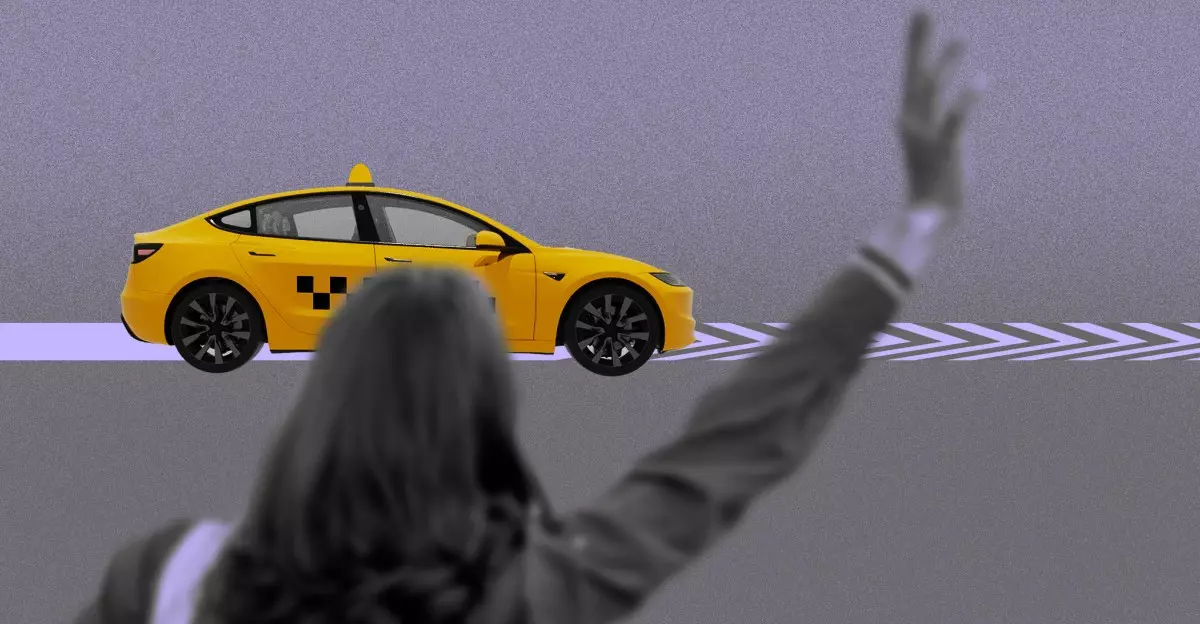Tesla’s latest venture into robotic taxi services has garnered a heated response not just from potential riders but also from the media at large. The recent launch event in Austin, Texas, has become emblematic of Tesla’s controversial approach to media relations and public perceptions. This isn’t simply about introducing a new piece of technology; it highlights a larger commentary on how Tesla has deftly reshaped the narrative around its products, opting for a well-curated promotional strategy over open engagement with the mainstream press. Journalists meant to cover the event found themselves sidelined, while Tesla’s influencer community flourished in their absence, raising questions about transparency and responsibility in tech reporting.
The Rise of Influencer Culture
In this age of social media dominance, influencers have emerged as key figures in shaping public opinion, especially in the realm of technology. In Austin, influencers aligned with Tesla overshadowed traditional media narratives, creating a feedback loop that reinforced their collective enthusiasm for the company. These influencers pride themselves on a ‘we are the media now’ mantra, rendering conventional journalism almost obsolete in this context. But therein lies a problem: the echo chambers created by these fervent supporters often drown out critical voices, fostering an environment rife with misinformation and unchallenged hype.
The atmosphere around the launch was palpable; many influencers were caught on camera excitedly promoting the robotaxi while blatantly dismissing inquiries from professional journalists. For example, one Tesla supporter reportedly ignored several attempts by a Reuters journalist to initiate conversation, showcasing a blatant disregard for accountability. As influencers like Kim Java selectively control their narratives, they further skew public perception, leveraging their platforms to distort the reality of the tech they endorse.
The Stakes of PR Manipulation
Tesla’s strategy of curating preferred narratives isn’t just a marketing tactic; it’s a well-executed attempt to protect Elon Musk’s image and the company’s baffling product timelines. The corporation has a fraught history marked by contention with journalists; since its PR team was dissolved in 2020, the company has adopted a strategy that prioritizes fan engagement over critical reporting. By sidestepping traditional media, Tesla successfully curates its image, but such practices come at the cost of transparency—an essential component in the tech industry, where public trust can make or break a product.
Commentators and scholars, including Joan Donovan and Ed Niedermeyer, have aptly described this launch as a textbook example of corporate propaganda. They argue that this careful orchestrating of a narrative serves not only to protect Tesla but also to reinforce the ‘us vs. them’ mentality that Musk has actively cultivated against mainstream media. The influencer culture surrounding Tesla has the potential to create serious ethical concerns regarding the authenticity of the narrative being portrayed.
Reflections on Community and Credibility
Many Tesla enthusiasts function within an insulated community, where loyalty and financial investment foster a powerful kinship among supporters. Participants share referral codes delving into perks that can range from minor discounts to exclusive access to special events. Such engagements reinforce community bonds but also raise questions about the motivations behind the fervent support. This isn’t merely a fan club; it’s a business relationship, one that ties supporters’ financial fortunes to the whims of a tech company that has consistently struggled to deliver on its promises.
This relationship can lead to blind loyalty, blinding supporters to potential flaws in the technology or strategy. Those evicted from Tesla’s good graces for daring to criticize the brand quickly become cautionary tales within the community, further locking in a cycle of unidimensional narrative building. The onus is now on Tesla to navigate this minefield carefully, and if the company continues to prioritize influencer marketing over constructive criticism, it risks alienating both potential customers and the broader public.
The Implications for Future Technologies
As Tesla embarks on this ambitious journey to transform urban transportation through a fleet of autonomous vehicles, the challenges it faces could serve as a cautionary tale for other tech firms. The allure of suppressing dissenting voices may offer short-term gains, but it ultimately undermines the credibility essential for long-term viability. This culture of fan-driven media carries the potential to mislead users about the true state of the technology, risking user safety, undermining stakeholder confidence, and potentially endangering the regulatory acceptance that is crucial for advancements in technology such as self-driving vehicles.
Operating within these tightly knit echo chambers can only provide surface-level support. For Tesla to genuinely succeed in its vision of a future filled with self-driving taxis, it must confront the reality of its technology in the public arena, where accountability is non-negotiable. The robotaxi rollout, rife with insecurity and a questionable track record, is just the beginning. This chapter could define not only Tesla’s future but also the landscape of tech journalism and influencer relationships for years to come, highlighting the need for an equilibrium between hype and hard truths.

